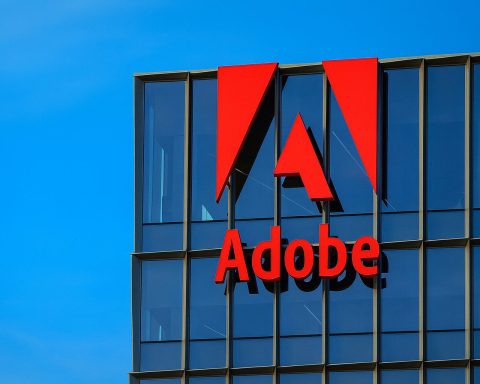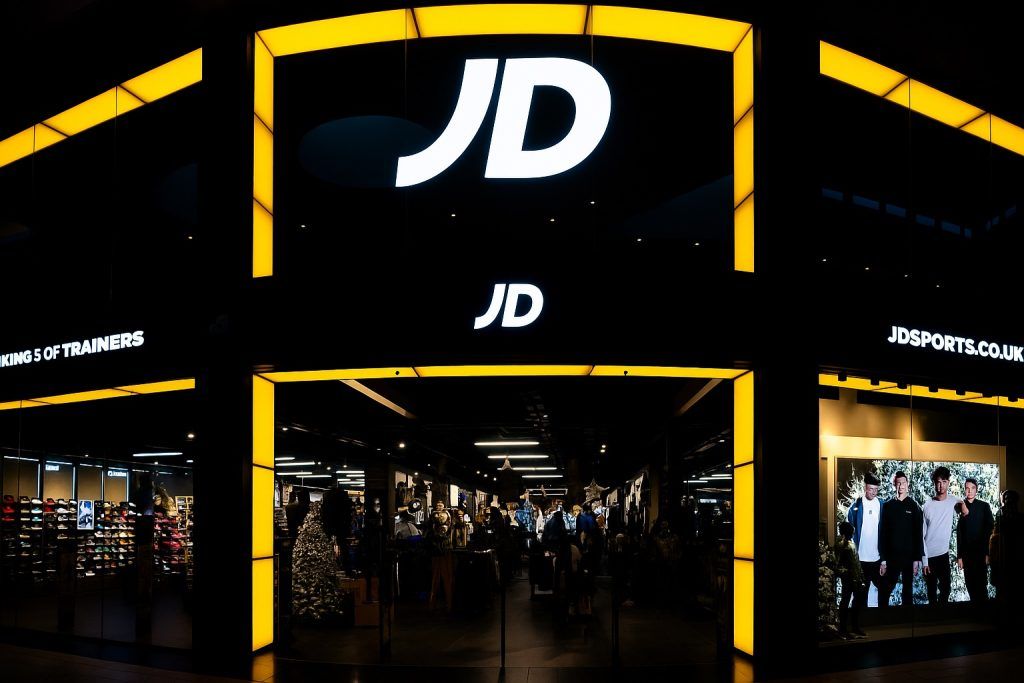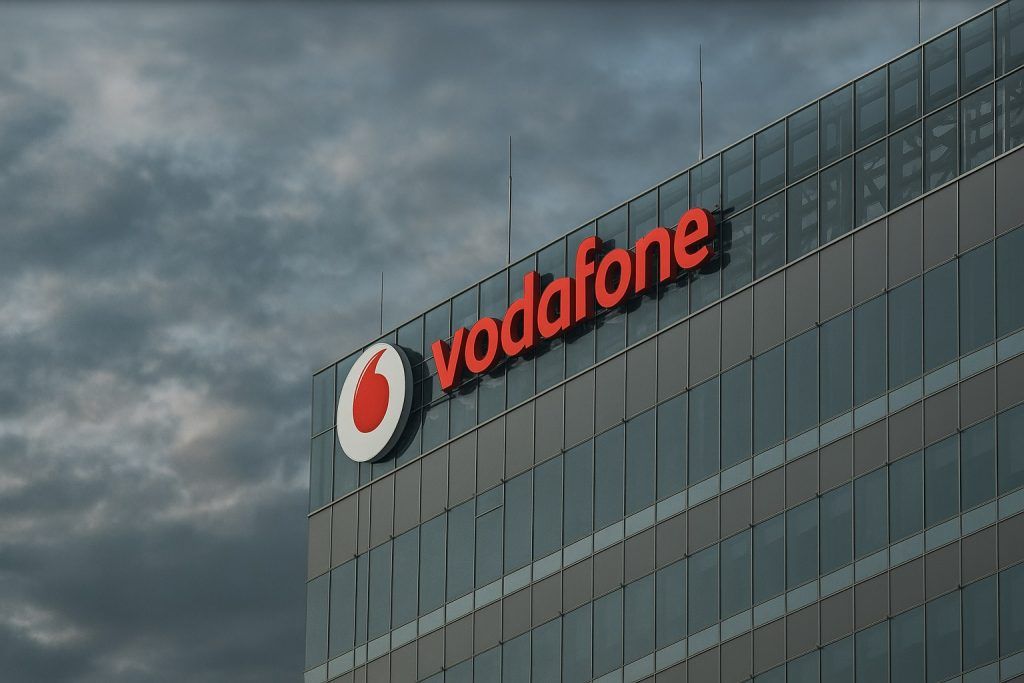Glencore plc (LON:GLEN) sits at the centre of several major stories today, spanning worker retrenchments in South Africa, political wrangling over cobalt regulations in the EU, uncertainty around Australian smelter support, and the aftermath of a profitable stake reduction in U.S. producer Century Aluminum. All of this is feeding into a choppy share price and renewed scrutiny of the commodities giant’s long‑term strategy.
At a glance on 19 November 2025, key developments affecting Glencore include:
- Warning that proposed EU cobalt exposure rules could cripple European refining and push more processing to China. [1]
- Plans to start significant retrenchments at South African ferrochrome smelters in the coming weeks, threatening thousands of direct and indirect jobs. [2]
- An Australian report claiming Glencore might walk away from a A$600m smelter support package — a claim the company has called “completely false”. [3]
- Confirmation that Glencore has trimmed its stake in Century Aluminum from 43% to 33%, locking in gains after U.S. tariffs drove an 80% rally in the stock. [4]
- A mixed market reaction, with the Glencore share price dipping in early London trade before edging higher later in the morning, while new valuation analysis suggests the stock is trading close to estimated fair value. [5]
EU cobalt rules row: Glencore warns of supply risk
In Brussels, Glencore has joined other major refiners in sounding the alarm over proposed European Union rules that sharply tighten workplace exposure limits for cobalt dust.
According to a Miningmx report, Glencore and Umicore are among the companies that signed a letter to European Commission president Ursula von der Leyen ahead of a vote by EU member states on new occupational exposure limits. [6]
Key points from that intervention:
- The Commission has proposed a cobalt exposure limit of 0.01 mg/m³ of inhalable particles, far below China’s 0.05 mg/m³ and the UK’s 0.1 mg/m³ thresholds. [7]
- Industry groups argue for 0.02 mg/m³, claiming the stricter level would make many European operations uneconomic, forcing production to jurisdictions with looser rules. [8]
- The letter warns that the regulations could shut down around one in six cobalt facilities in Europe and undermine the EU’s ambition to build a domestic supply chain for critical battery metals under the Critical Raw Materials Act. [9]
EU regulators counter that the tighter rules are aimed at reducing serious health risks such as lung, kidney and liver disease among workers. [10]
For Glencore, one of the world’s largest cobalt producers, the debate strikes at the heart of its positioning as a key supplier for the energy transition. Stricter limits in Europe could:
- Make local refining and processing less attractive relative to Asia.
- Increase dependence on Chinese refining capacity, even as Western governments try to diversify away from it.
- Potentially shift more of Glencore’s processing footprint — and future investment — outside the EU.
South Africa: Ferrochrome retrenchments and energy‑price pain
In South Africa, Glencore’s chrome joint venture with Merafe Resources is preparing to cut jobs as part of a restructuring of its ferrochrome operations.
A South African Labour News synopsis, citing Miningmx, reports that retrenchments will begin at the idled Wonderkop and Boshoek ferrochrome smelters in the coming weeks. The Glencore‑Merafe Chrome Joint Venture (JV) operates these assets, with Merafe holding 20.5% and Glencore the remainder. [11]
According to that report:
- Around 2,425 direct jobs and more than 17,000 indirect jobs could be affected. [12]
- The Wonderkop and Boshoek smelters will be placed on care and maintenance, while Glencore’s Lion smelter continues to operate. [13]
- Glencore blames the retrenchments on the lack of a competitive electricity tariff from state‑owned utility Eskom, saying that despite extensive engagement, no viable government solution has been offered. [14]
The move underlines how South Africa’s high and volatile power prices — and persistent grid challenges — are reshaping its once‑dominant ferrochrome industry. It also overlaps with Glencore’s own production data: year‑to‑date ferrochrome output was already down 51% versus 2024, in part due to earlier capacity reductions. [15]
For Glencore shareholders, the retrenchments highlight a tension at the heart of the company’s strategy:
- Operationally, trimming high‑cost, power‑hungry capacity can protect margins.
- Politically and socially, large mining job cuts attract scrutiny from governments and unions, feeding pressure on the company’s environmental, social and governance (ESG) credentials.
Australia: A$600m smelter support package in the spotlight
In Australia, a local newspaper has raised questions about a promised A$600 million support package to keep Glencore’s Mount Isa copper smelter and Townsville refinery open.
North West Weekly reports that, 42 days after federal and state ministers announced the three‑year funding package, a final agreement still hasn’t been signed. The article says Glencore is considering walking away from the deal, citing uncertainty created by explosives maker Dyno Nobel’s plan to close its Phosphate Hill fertiliser plant in 2026 if a buyer can’t be found. [16]
The story was quickly updated with a firm rebuttal from Glencore:
- The company called the suggestion that it might reject the package “completely false”, saying it remains “on track to sign the agreement”. [17]
- A spokesperson said Glencore and the Australian and Queensland governments are still working through a “very detailed agreement process”, describing the talks as commercially sensitive. [18]
The article also highlights a key operational link: Mount Isa’s copper smelter, the on‑site acid plant run by Dyno Nobel and the Phosphate Hill fertiliser operation are deeply interdependent. The smelter’s sulphur dioxide emissions feed the acid plant, which in turn produces sulphuric acid for Phosphate Hill. Any shutdown at Phosphate Hill could therefore undermine the economics — and environmental compliance — of the smelter itself. [19]
For Glencore, the message is that even heavily subsidised industrial assets remain vulnerable if a single link in the wider value chain fails.
Century Aluminum stake trimmed after tariff‑driven rally
Today’s headlines also reflect the aftermath of a major portfolio move announced yesterday: Glencore’s decision to trim its holding in Century Aluminum, the largest primary aluminum producer in the United States.
A Reuters report confirms that Glencore cut its stake from 43% to 33%, selling 9 million shares on 10 November for $272.25 million and converting preferred stock into ordinary shares. [20]
The backdrop:
- U.S. President Donald Trump doubled tariffs on aluminium imports to 50% on 4 June, aiming to boost domestic production. [21]
- Century Aluminum’s share price has surged about 80% since June as U.S. aluminum prices rose, supported by higher London Metal Exchange prices and a record Midwest premium. [22]
Despite cashing in on the rally, Glencore has emphasised its continued confidence in Century’s management and ongoing commercial relationship — it supplies alumina feedstock and buys nearly all of Century’s North American aluminium output. [23]
The sale fits a wider pattern:
- Glencore is monetising parts of its investment portfolio when valuations become stretched.
- At the same time, the group is returning capital through buybacks, including an off‑market purchase of 9.6 million Glencore shares from UBS on 14 November under its 2025/26 buy‑back programme. [24]
This combination of targeted asset sales and share repurchases is central to CEO Gary Nagle’s pitch that Glencore can keep simplifying its portfolio while still rewarding investors.
Smelter pressures from Canada to South Africa
The Australian and South African smelter stories come on top of earlier news that Glencore is facing mounting pressure at its Horne copper smelter in Canada.
Reuters recently reported that the company is planning to close Horne, Canada’s largest copper metal operation, because of environmental concerns and the hundreds of millions of dollars required to modernise the site, according to sources. [25]
Key details from that report:
- Horne and the nearby Canadian Copper Refinery in Quebec together employ over 1,000 workers and supply critical materials to the North American market. [26]
- The operations are facing a class‑action lawsuit over arsenic emissions, with damages potentially stretching back to 2020, although the sources cited in the article say the closure plans relate primarily to upgrade costs rather than the lawsuit itself. [27]
Glencore publicly insists it is not currently considering closing Horne or the refinery, while acknowledging “enormous pressures” on smelters globally, including financial and regulatory challenges. [28]
Taken together with the South African ferrochrome retrenchments, the picture is one of a company systematically reassessing energy‑intensive, emissions‑heavy assets in jurisdictions where power or environmental costs have become difficult to manage.
Legal headwinds: UK bribery case moves towards 2027 trial
On the legal front, Glencore’s legacy corruption issues continue to play out in the courts.
On 10 November, Reuters reported that four former Glencore oil traders pleaded not guilty in a London court to bribery charges linked to the company’s West African operations between 2007 and 2014. Their trial is scheduled to begin in October 2027 and could last up to six months. [29]
The charges relate to alleged corrupt payments to officials in Nigeria, Cameroon and Ivory Coast, as well as alleged document falsification. The proceedings follow Glencore’s earlier corporate guilty pleas and settlements over bribery and market manipulation in the U.S., UK and Brazil.
While the company itself has already taken provisions and restructured its compliance programmes, the high‑profile trial risks:
- Keeping Glencore’s historic misconduct in the headlines.
- Adding reputational pressure at a time when regulators and investors are paying closer attention to ESG performance in the mining and trading sectors.
Share price and valuation: Glencore trades near “fair value”
In London trading this morning, Glencore’s share price initially came under mild pressure. According to financial news site finanzen.ch, the stock fell about 0.2% to 3.55 GBP at 09:28 local time, putting it among the weaker performers in the FTSE 100 at that point. [30]
Later in the morning, Glencore’s own website showed the LSE share price at 356.45 pence (about 3.56 GBP) at 11:40 GMT, slightly above the previous close. [31]
From a valuation perspective, a new Simply Wall St analysis published today estimates Glencore’s fair value at around 3.67 GBP per share using a two‑stage discounted cash‑flow model. With the stock trading at roughly 3.56 GBP, the model suggests Glencore is priced close to its intrinsic value, with only a small discount. [32]
The same analysis highlights:
- Opportunities: the potential to break even as soon as next year and a solid cash runway based on current free cash flows.
- Risks: relatively weak coverage of debt interest and dividends by cash flow, underlining ongoing balance‑sheet and payout‑policy sensitivities. [33]
Importantly, this is just one model; other analysts have recently turned more cautious, with Bernstein downgrading the stock to “Market Perform” in October on valuation grounds. [34]
(Nothing in this article constitutes investment advice; investors should do their own research or consult a qualified adviser.)
Operational backdrop: Q3 production solid, but portfolio shifting
Behind today’s headlines, Glencore’s latest Third Quarter 2025 Production Report offers useful context on how the wider business is performing. [35]
Highlights include:
- Copper: Own‑sourced copper production of 583,500 tonnes in the first nine months of 2025 — down 17% year‑on‑year due to lower grades and planned mine sequencing — but Q3 copper output was 36% higher than Q2, reflecting stronger grades at key operations like KCC and Antamina. [36]
- Cobalt: Production up 8% year‑on‑year to 28,500 tonnes, mainly due to higher grades and volumes at Mutanda. [37]
- Zinc: Up 10% versus the comparable period, driven by better grades at Antamina and higher volumes at McArthur River. [38]
- Ferrochrome: Output down 51%, foreshadowing today’s retrenchment news in the South African alloys business. [39]
Glencore has maintained full‑year 2025 production guidance for key commodities, tightening the ranges now that only one quarter remains. CEO Gary Nagle reiterated that marketing performance is tracking around the midpoint of the group’s upgraded long‑term EBIT guidance range of $2.3–3.5 billion per year. [40]
What to watch next for Glencore
Looking beyond today, several catalysts could shape Glencore’s trajectory into 2026:
- EU cobalt vote and implementation
Whether member states and the European Parliament back the Commission’s strict exposure limits — or compromise closer to industry’s preferred level — will influence where and how Glencore refines cobalt for Europe’s battery supply chain. [41] - Outcome of smelter talks in Australia and South Africa
Final terms (and timing) of the Mount Isa/Townsville support package, plus any further response from South Africa’s government on power tariffs, will determine how much of Glencore’s smelting footprint remains viable in those regions. [42] - Further portfolio moves after Century Aluminum
With one major stake now trimmed, investors will be watching whether Glencore continues to recycle capital by selling down other non‑core holdings, particularly in aluminium and agriculture, while accelerating buybacks. [43] - Regulatory and legal developments
Progress on the Canadian Horne smelter emissions plan and the UK bribery case will feed into the group’s risk profile and could influence how regulators, lenders and shareholders price Glencore’s governance standards. [44]
For now, Glencore enters late 2025 with robust marketing earnings and a portfolio that still throws off substantial cash — but today’s news makes clear that the company’s energy‑intensive smelters, regulatory exposure and capital allocation choices will remain under close watch from governments, investors and workers alike.
References
1. www.miningmx.com, 2. www.salabournews.co.za, 3. www.northwestweekly.com.au, 4. www.reuters.com, 5. www.finanzen.ch, 6. www.miningmx.com, 7. www.miningmx.com, 8. www.miningmx.com, 9. www.miningmx.com, 10. www.miningmx.com, 11. www.salabournews.co.za, 12. www.salabournews.co.za, 13. www.salabournews.co.za, 14. www.salabournews.co.za, 15. www.glencore.com, 16. www.northwestweekly.com.au, 17. www.northwestweekly.com.au, 18. www.northwestweekly.com.au, 19. www.northwestweekly.com.au, 20. www.reuters.com, 21. www.reuters.com, 22. www.reuters.com, 23. www.reuters.com, 24. www.moneyweb.co.za, 25. www.reuters.com, 26. www.reuters.com, 27. www.reuters.com, 28. www.reuters.com, 29. www.reuters.com, 30. www.finanzen.ch, 31. www.glencore.com, 32. simplywall.st, 33. simplywall.st, 34. www.investing.com, 35. www.glencore.com, 36. www.glencore.com, 37. www.glencore.com, 38. www.glencore.com, 39. www.glencore.com, 40. www.glencore.com, 41. www.miningmx.com, 42. www.northwestweekly.com.au, 43. www.reuters.com, 44. www.reuters.com










